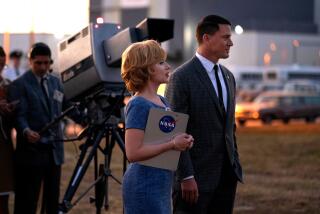Been there, done that
- Share via
WHEN IT COMES TO poetic vision, “Fly Me to the Moon” has it all over “Global Precipitation Mission.” But the prosaic and twice-delayed NASA meteorology project would conduct a useful scientific study of Earth weather. A return to the moon is a romantic but expensive mission in search of a purpose.
NASA’s announcement last week that it would erect a permanent moon station by 2020 as a sort of scientific way station to Mars was dramatic but not unexpected -- especially not after President Bush gave a speech two years ago calling on the space agency to return astronauts to the moon and from there to Mars. NASA officials enthused about the international partners for the moon project and the savings they would achieve by using existing technologies. What they didn’t say is how much it would cost -- and more important, why do it in the first place except to recapture a wrinkled sense of glory.
Even NASA’s “Why the Moon?” website doesn’t really explain it. It’s full of oddly cheerful videos (“We’re going back to the moon ... this time to stay!”) suggesting that people might like to colonize the moon as a new home (not until the surf’s up at the Sea of Tranquillity) and vowing that this will enable new scientific studies, encourage global cooperation and inspire children. These are laudable goals, all of which could be managed without a manned moon station and a 12-figure price tag. The U.S. and India already are working together on an unmanned space mission.
Manned moon flight may appeal to baby boomers, but it makes little scientific sense for most space missions these days. Robots can now perform, or be developed to perform, most of the tasks people would do at a moon station. And even if the world shares the goal of landing astronauts on Mars, this is a roundabout way to achieve it. Why re-create the old technologies for going to the moon when they are of no use to get to Mars?
For too long, NASA has been overspending on manned flight and under-funding scientific study. Vital missions to study the Earth’s climate, for example, have been delayed for years or indefinitely. An unmanned scientific mission to scan for Earth-like planets in nearby solar systems, scheduled to launch in 2011, has been postponed until 2015.
Frank Sinatra recorded the song “Fly Me to the Moon” in 1964, five years before Neil Armstrong got there. These days, it makes more sense to have robots do the flying. Just last week, scientists announced they’d found evidence of water flowing on Mars -- a possible harbinger of Martian life. The discoverer of this exciting news? The unmanned Mars Global Surveyor.






